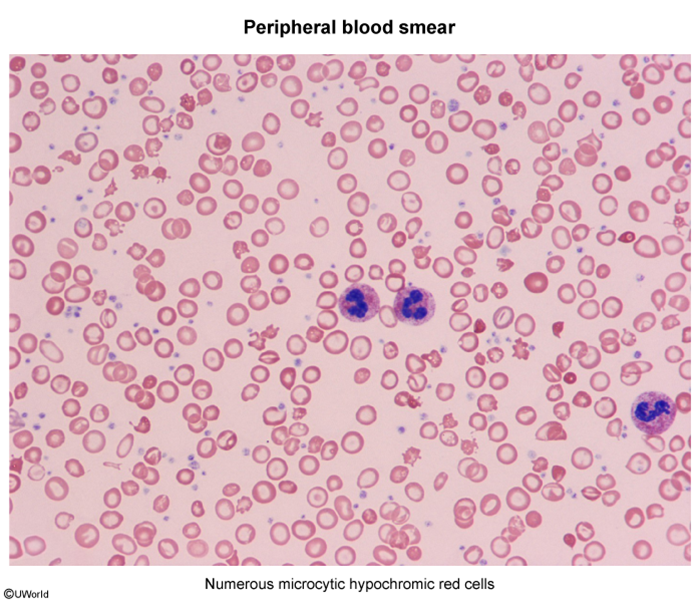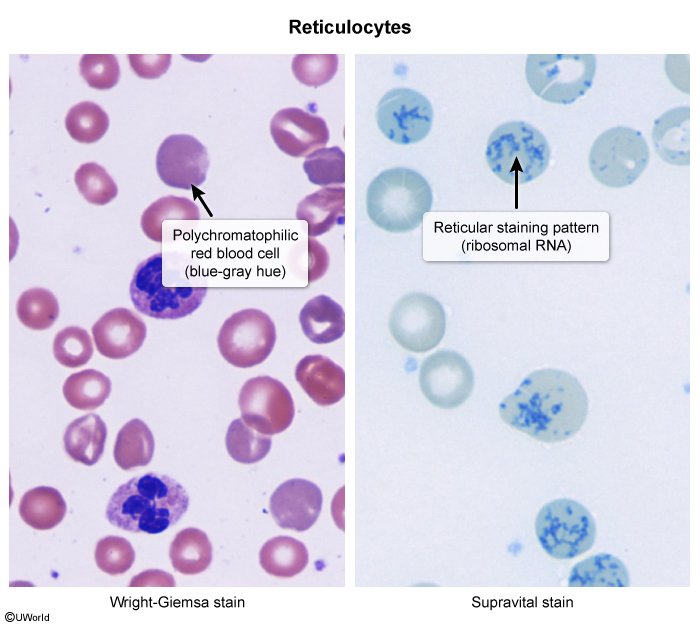Approach To Anemia
Article Sections
Introduction
Anemia is characterized by a decrease in hematocrit (a marker of red blood cell [RBC] mass) and/or hemoglobin concentration, potentially leading to impaired oxygen delivery to tissue. It can arise from a variety of causes, broadly grouped into 3 mechanisms: blood loss, impaired RBC production, and increased RBC destruction. The evaluation of anemia involves integrating clinical presentation with targeted laboratory investigations to identify the underlying cause.
RBC homeostasis
Erythropoietin (EPO), which is secreted by the kidneys in response to tissue hypoxia (Figure 1), stimulates hematopoietic stem cells in the bone marrow to undergo differentiation, rapid replication, and division. This process eventually results in the production of reticulocytes (immature RBCs), which exit the bone marrow and eventually become mature RBCs. Normal RBCs are anucleate and have a biconcave disc shape with a central pallor.
Continue Learning with UWorld
Get the full Approach To Anemia article plus rich visuals, real-world cases, and in-depth insights from medical experts, all available through the UWorld Medical Library.
Figures
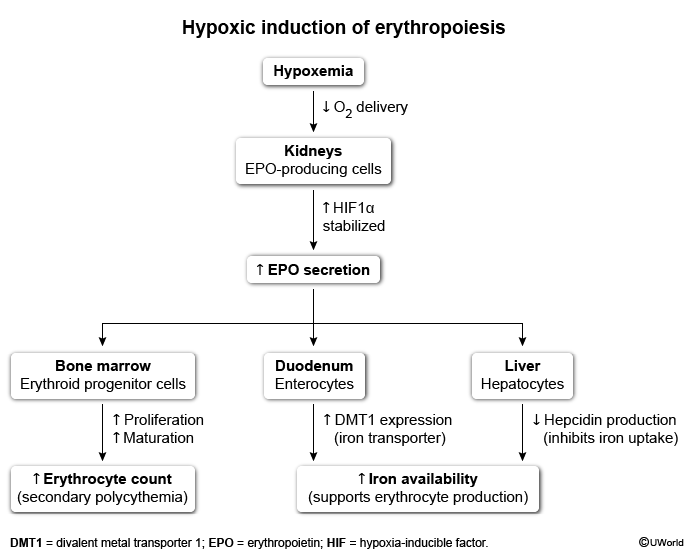
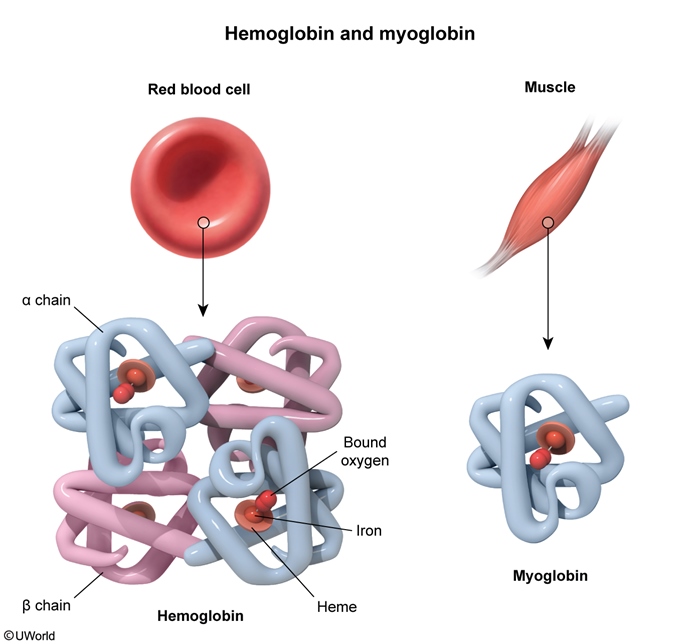
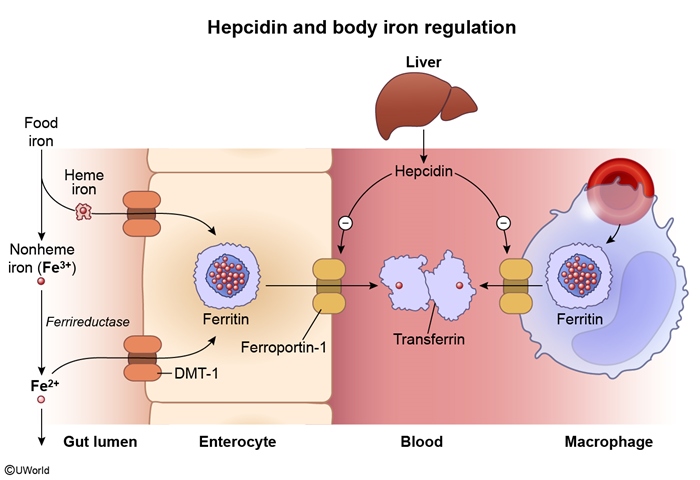
Images
